Covered head to tail in rosy red to orange plumage, along with their unique song these birds are arguably one of North America’s most striking birds.
Meet the Summer Tanager
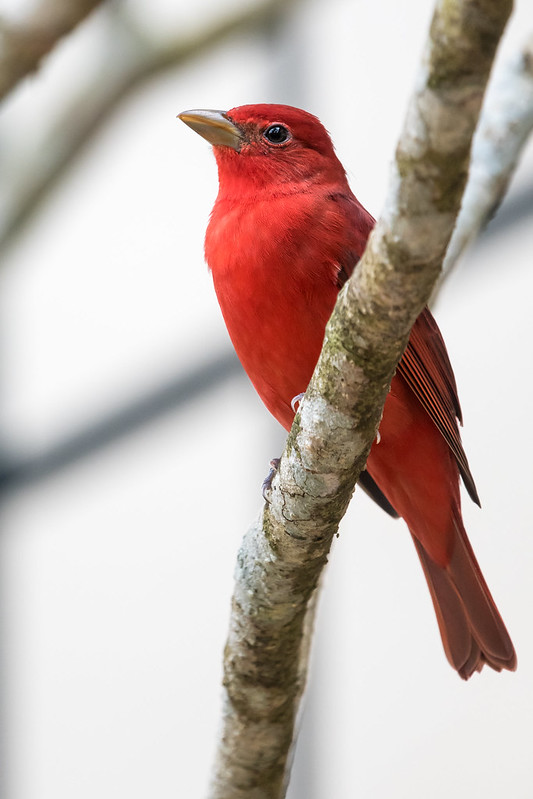

Photo Courtesy of Greg Schechter / CC BY 2.0
Females tend to be more olive above and orange-yellow below. Their wings and tail are olive-brown, with some females developing male pigmentation as they age.
Juveniles tend to resemble females.
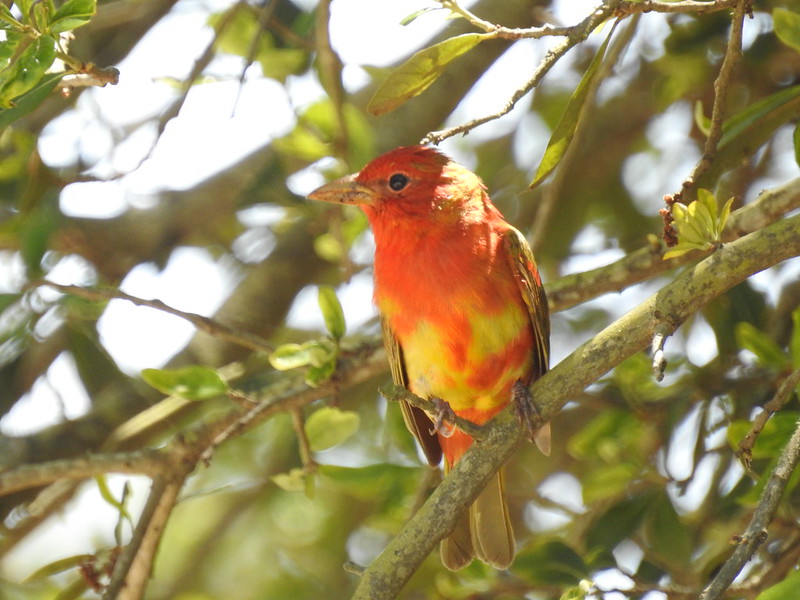
Photo Courtesy of Rickard Holgersson / Public domain
These birds are found in much of the southern and eastern United States, south of southern Pennsylvania and northern Illinois. During winter they migrate to Mexico and northern South America.
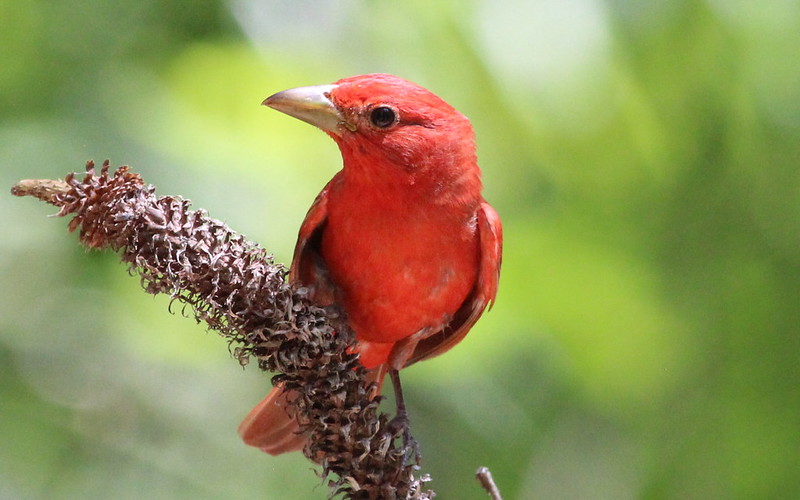
Photo Courtesy of Gary Leavens / CC BY-SA 2.0
Summer tanager prefers to live in open wooded areas, especially areas containing Oak trees. Specialized bee and wasp eaters, these birds will also dine on other insects, and occasionally eat berries.
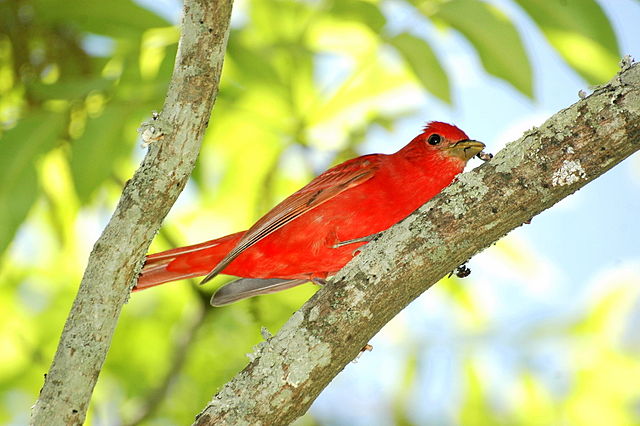
Photo Courtesy of Ospr3yy at English Wikipedia – Transferred from en.wikipedia to Commons by Innotata / FAL
Once they have arrived in their breeding grounds in spring, Summer Tanagers usually build a nest on a horizontal branch somewhere between 2.5 to 10.5 meters above the ground. The nest is built solely by the female from herbaceous vegetation line with grass, into which 3 to 4 eggs are laid. Incubation again is done solely by the female lasting 12 to 13 days. The male, depending on his inclination may feed the female during this time or care for his feathers. However, once the chicks hatch he goes into full swing helping the female feed and tends to their needs. After 8 to 10 weeks the chicks leave the nest.
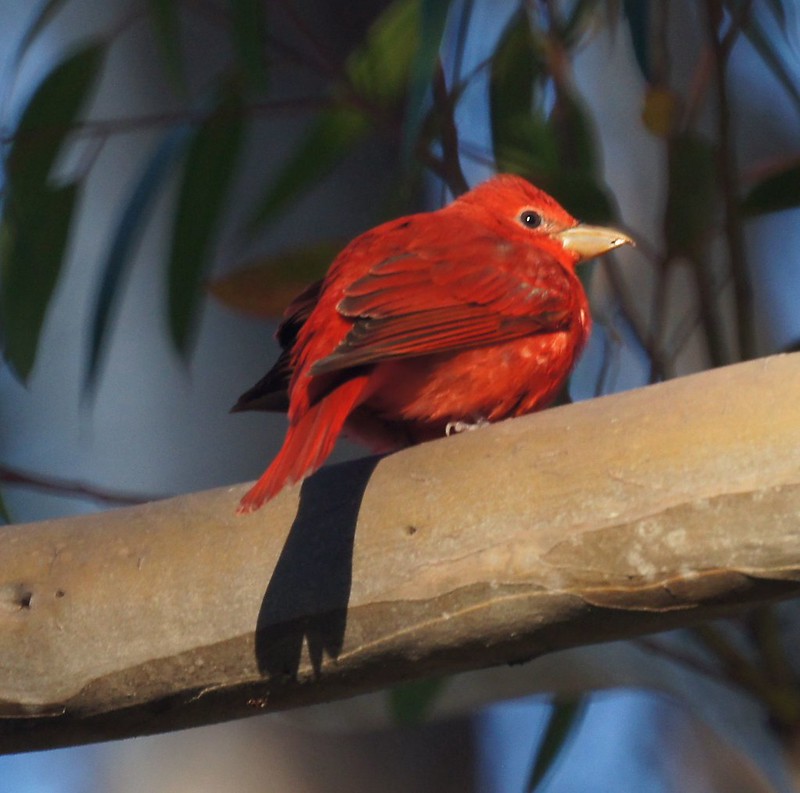
Photo Courtesy of Mike’s Birds / CC BY-SA 2.0
This species has an extremely large range and hence does not approach the thresholds for Vulnerable under the IUCN range size criterion.
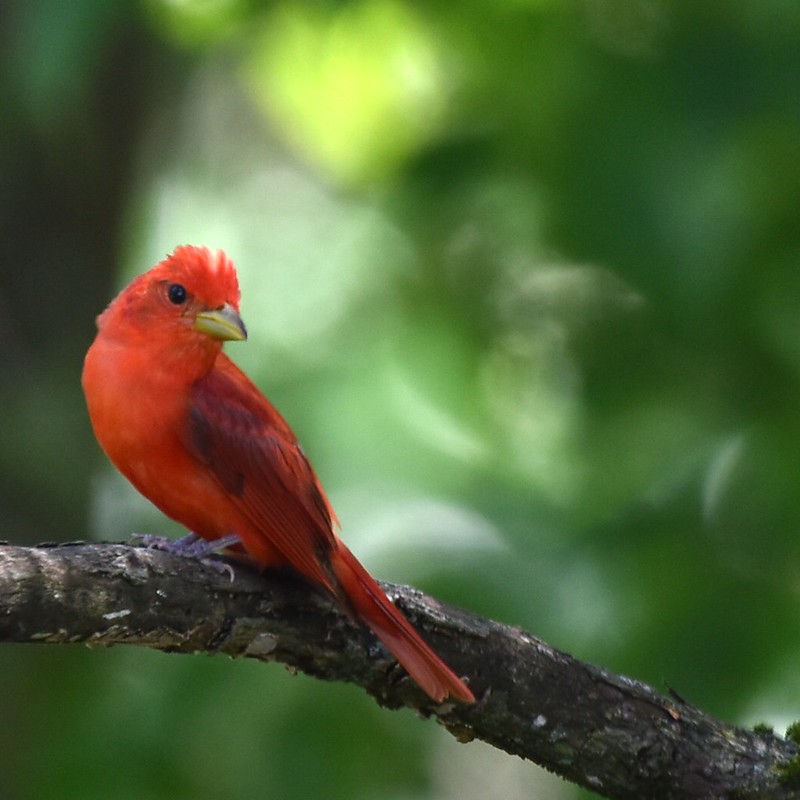
Photo Courtesy of Laura Wolf / CC BY 2.0
Watch and listen to this bird right here below:
Covered head to tail in rosy red to orange plumage, along with their unique song these birds are arguably one of North America’s most striking birds.
Meet the Summer Tanager
 Photo Courtesy of Becky Matsubara / CC BY 2.0
Photo Courtesy of Becky Matsubara / CC BY 2.0
The summer tanager (Piranga rubra), is a medium-sized American songbird. Formerly placed in the tanager family (Thraupidae). This bird and other members of its genus are now classified in the cardinal family Cardinalidae. Measuring 6.7 inches long, the males of this species are bright rose or orange-red throughout the year. They are distinguished from the scarlet tanager because of their paler plumage. Also because the Summer tanager’s wings are red and not black.

Females tend to be more olive above and orange-yellow below. Their wings and tail are olive-brown, with some females developing male pigmentation as they age.
Juveniles tend to resemble females.
 Photo Courtesy of Rickard Holgersson / Public domain
Photo Courtesy of Rickard Holgersson / Public domain
These birds are found in much of the southern and eastern United States, south of southern Pennsylvania and northern Illinois. During winter they migrate to Mexico and northern South America.

Summer tanager prefers to live in open wooded areas, especially areas containing Oak trees. Specialized bee and wasp eaters, these birds will also dine on other insects, and occasionally eat berries.
 Photo Courtesy of Ospr3yy at English Wikipedia – Transferred from en.wikipedia to Commons by Innotata / FAL
Photo Courtesy of Ospr3yy at English Wikipedia – Transferred from en.wikipedia to Commons by Innotata / FAL
Once they have arrived in their breeding grounds in spring, Summer Tanagers usually build a nest on a horizontal branch somewhere between 2.5 to 10.5 meters above the ground. The nest is built solely by the female from herbaceous vegetation line with grass, into which 3 to 4 eggs are laid. Incubation again is done solely by the female lasting 12 to 13 days. The male, depending on his inclination may feed the female during this time or care for his feathers. However, once the chicks hatch he goes into full swing helping the female feed and tends to their needs. After 8 to 10 weeks the chicks leave the nest.

This species has an extremely large range and hence does not approach the thresholds for Vulnerable under the IUCN range size criterion.
 Photo Courtesy of Laura Wolf / CC BY 2.0
Photo Courtesy of Laura Wolf / CC BY 2.0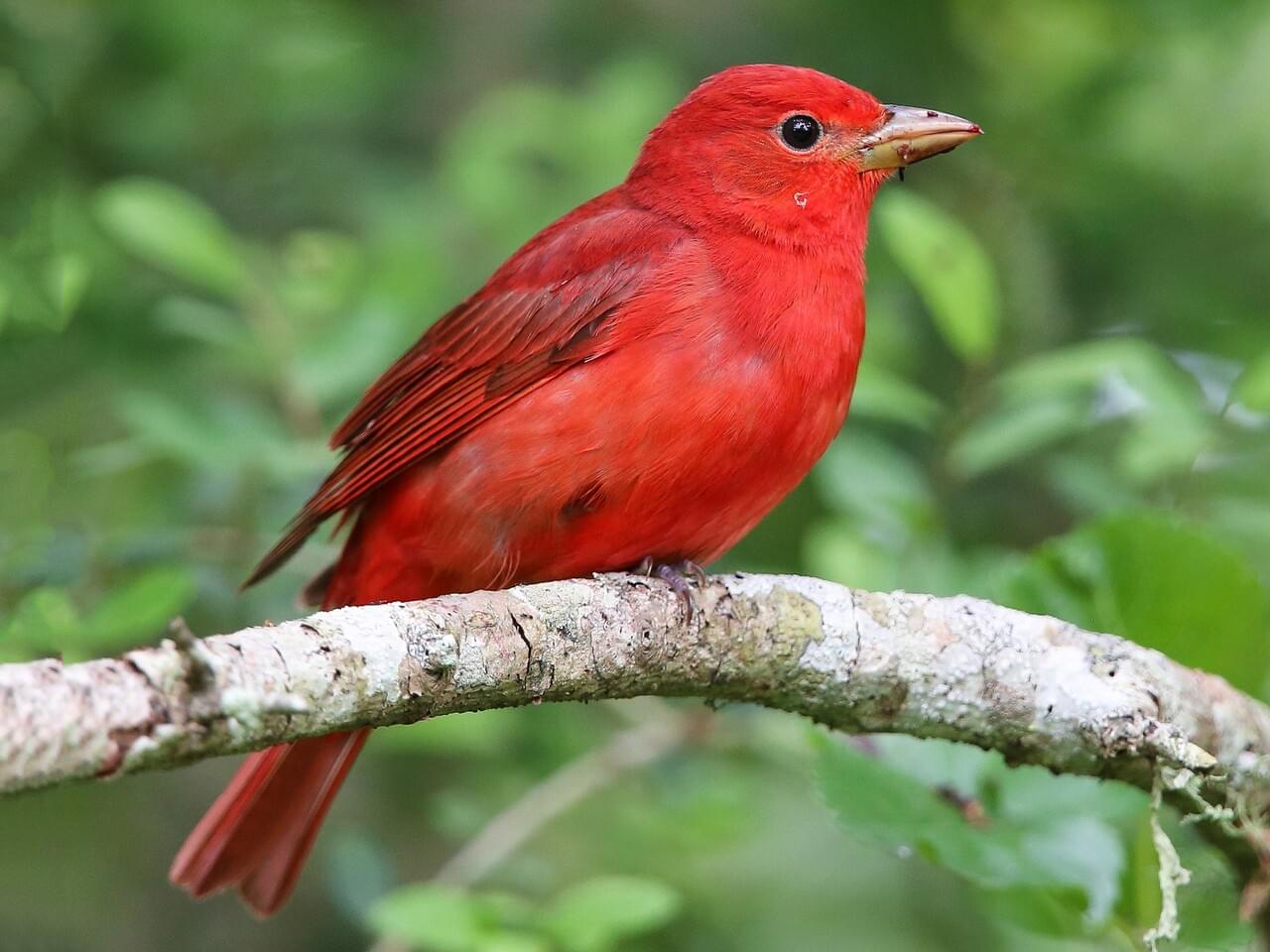
Watch and listen to this bird right here below:




